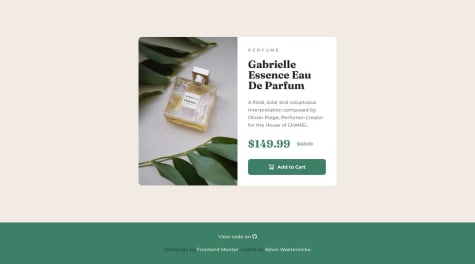The class names like recipe-page, preparationTime, and instructions are good, but wrapping these in semantic tags such as <article class="recipe-page"> or <section class="preparationTime"> could improve the structure.
Using alt text for the image is a good practice. The alt text "image not found" is a fallback, but providing a meaningful description of the image (e.g., "A picture of an omelette") would improve accessibility.
Feedback on the Recipe Page Implementation
- Semantic HTML
Strengths:
The HTML structure is largely semantic. Tags like <header>, <main>, <section>, and <footer> are not explicitly used, but the content is organized using appropriate tags like <h1>, <h2>, <p>, <ul>, and <ol>.
Headings (<h1>, <h2>) are used correctly to define sections of the page, which is good for both accessibility and SEO.
Improvements:
Consider using more semantic containers like <section> or <article> for better content delineation. For example, each section (Ingredients, Instructions, Nutrition) could be wrapped in a <section> tag with appropriate aria-label attributes to further enhance accessibility.
The class names like recipe-page, preparationTime, and instructions are good, but wrapping these in semantic tags such as <article class="recipe-page"> or <section class="preparationTime"> could improve the structure.
2. Accessibility
Strengths:
The color contrast between the text and background is generally good, which helps with readability.
Using alt text for the image is a good practice. The alt text "image not found" is a fallback, but providing a meaningful description of the image (e.g., "A picture of an omelette") would improve accessibility.
Improvements:
Add ARIA roles or labels where necessary. For instance, the image could use a more descriptive alt attribute to convey more information about the content.
Consider adding a <nav> element if there are going to be multiple sections or pages linked from this recipe, which would improve navigation for users with screen readers.
Ensure that interactive elements (if any) are keyboard accessible and provide focus styles.
3. Responsive Design
Strengths:
The use of media queries demonstrates a solid understanding of responsive design principles.
The layout adapts well to both small and large screens. The transition between screen sizes is smooth, and the layout remains visually appealing.
Improvements:
Consider using relative units (e.g., em, rem, %) more frequently instead of fixed units like px to improve scalability across different devices and screen resolutions.
On very small screens (e.g., less than 350px wide), some padding might be adjusted to ensure that the text doesn't get too cramped.
4. Code Structure and Readability
Strengths:
The code is well-organized, and the CSS is logically structured, making it easy to follow.
The use of descriptive class names and separation of concerns (HTML for structure, CSS for styling) is clear and appropriate.
Improvements:
Consider organizing CSS into sections with comments to delineate different parts of the page (e.g., /* Header Styles /, / Nutrition Section */). This can make the stylesheet more navigable for larger projects.
The seperator class could be more descriptive (e.g., section-divider), making it more meaningful in the context of the page.
5. Design Consistency
Strengths:
The overall design closely matches a standard recipe page layout, which is a plus for user familiarity.
The typography choices are clear and consistent, contributing to a professional look and feel.
Improvements:
Without the original design reference, it’s challenging to determine how closely the implementation matches the intended design. However, ensuring consistent spacing, font sizes, and color use across the entire page is crucial for maintaining design consistency.
Overall Assessment
This solution is well-executed with a good balance between semantic HTML, accessibility considerations, and responsive design. There is always room for improvement, particularly in refining accessibility features and enhancing the semantic structure with additional tags or attributes. The code is clean and well-structured, which is crucial for maintainability and scalability in larger projects.






